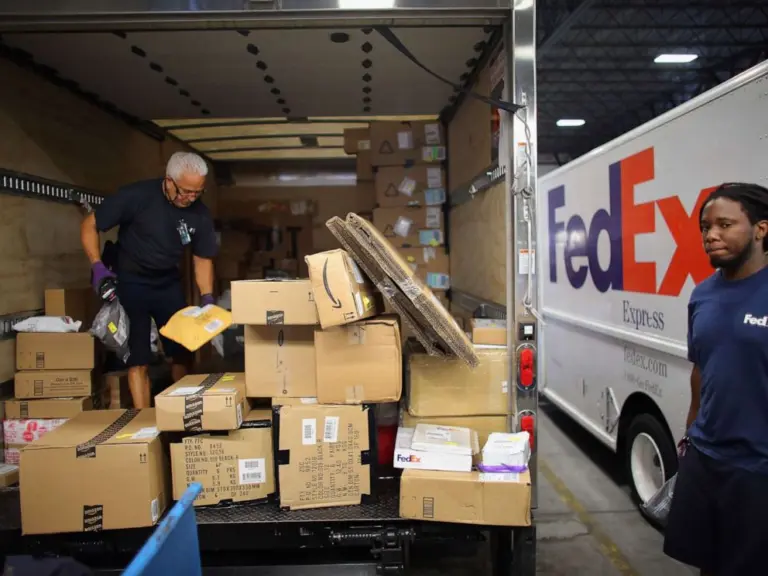China Post Small Packet Tracking: The Ultimate Guide (2025)
Your Complete Guide to China Post small packet tracking
Navigating the Complexities of China Post Small Packet Tracking
In the world of international shipping, one of the most pressing challenges faced by businesses is ensuring the timely and reliable delivery of small packages. For shippers, importers, and exporters, particularly those engaged in e-commerce, understanding the nuances of tracking shipments through China Post can be a daunting task. The complexities arise not only from the vast distances involved but also from varying shipping methods, costs, transit times, customs regulations, and potential risks of loss or delay.
China Post offers several services tailored for small packet shipments, each with its own set of characteristics. The most popular of these is the China Post Small Packet Plus, which provides an economical solution for sending lightweight items globally. However, one of the significant hurdles businesses encounter is the tracking of these packages. Many small packets may not have comprehensive tracking capabilities once they leave China, leaving recipients in the dark about their shipment’s whereabouts. This uncertainty can lead to frustration for both sellers and buyers and can potentially harm business relationships.
In this comprehensive guide, we will delve into essential aspects of China Post small packet tracking that every international shipper should know. We will explore the various shipping methods available under China Post, including the distinctions between registered and unregistered services. Understanding these differences will help you choose the best option for your needs while being mindful of costs.
Additionally, we will address the average transit times for different destinations, shedding light on the expected delivery windows based on the shipping method selected. Customs clearance can also be a significant factor in the delivery timeline, and we will provide insights into how to navigate these processes effectively.
Moreover, we will discuss the risks associated with using China Post small packet services, including the potential for lost packages and how to mitigate these risks through proper tracking and communication with sellers.
By the end of this guide, you will gain the expert knowledge necessary to navigate the complexities of China Post small packet tracking efficiently. Armed with this information, you will be better equipped to manage your shipments, enhance customer satisfaction, and ultimately grow your business in the competitive global marketplace.
Table of Contents
- Your Complete Guide to China Post small packet tracking
- Understanding Your Shipping Options: A Detailed Comparison
- Deconstructing the Cost: A Full Pricing Breakdown
- Transit Time Analysis: How Long Will It Take?
- Navigating Customs Clearance: A Step-by-Step Guide
- A Practical Guide to Choosing Your Freight Forwarder
- Incoterms 2020 Explained for Shippers
- Risk Management: Identifying and Mitigating Common Shipping Problems
- Frequently Asked Questions (FAQs) for China Post small packet tracking
- Conclusion: Key Takeaways for Successful Shipping
- Important Disclaimer
Understanding Your Shipping Options: A Detailed Comparison
Overview of Shipping Methods for China Post Small Packet Tracking
When it comes to international shipping from China, understanding the various transportation methods available is crucial for importers and exporters. Each method has its own strengths and weaknesses, making it essential to choose the right one based on your specific needs. Below is a detailed comparison of the primary shipping methods relevant to China Post small packet tracking.
| Shipping Method | Best For | Speed | Cost Level | Key Advantages | Key Disadvantages |
|---|---|---|---|---|---|
| Sea FCL (Full Container Load) | Large shipments, businesses with high volume | 20-40 days | Low | Cost-effective for large volumes, minimal handling | Slower transit times, requires port access |
| Sea LCL (Less than Container Load) | Small to medium-sized shipments | 30-60 days | Medium | Flexibility for smaller shipments, shared container costs | Slower than air, longer handling times |
| Air Freight | Urgent shipments, high-value goods | 5-15 days | High | Fast delivery, good for small packages | Expensive, weight and size restrictions |
| Rail Freight | Landlocked regions, medium-sized shipments | 10-20 days | Medium | Cost-effective for certain routes, reliable | Limited routes compared to air and sea |
| Express Services (DHL, FedEx, etc.) | Time-sensitive deliveries | 1-5 days | Very High | Fastest delivery, door-to-door service | Very expensive, not suitable for large volumes |
Detailed Breakdown of Each Method
Sea FCL (Full Container Load)
Sea FCL is a shipping method where an entire container is leased for the shipment of goods. This is ideal for businesses with large volumes of goods to transport.
- When to Use: Use Sea FCL when you have enough cargo to fill an entire container and when cost is a significant concern.
- Pros:
- Economical for large volumes.
- Reduced risk of damage due to minimal handling.
- Cons:
- Longer shipping times.
- Requires access to a port and coordination for loading and unloading.
Sea LCL (Less than Container Load)
Sea LCL allows shippers to share container space with other shipments, making it suitable for smaller loads.
- When to Use: Ideal for businesses with smaller shipments that do not warrant an entire container.
- Pros:
- Cost-effective for smaller shipments.
- Flexible shipping options.
- Cons:
- Slower transit times compared to FCL.
- Increased handling, which can lead to damage.
Air Freight
Air freight involves transporting goods via aircraft, making it one of the fastest shipping methods available.
- When to Use: Best for urgent shipments or high-value items where speed is essential.
- Pros:
- Quick delivery times.
- Enhanced tracking capabilities.
- Cons:
- Higher costs compared to sea freight.
- Restrictions on weight and dimensions.
Rail Freight
Rail freight is an alternative for transporting goods overland, often used for shipments to and from landlocked regions.
- When to Use: Use rail freight for medium-sized shipments when you want a balance between speed and cost.
- Pros:
- Economical for certain routes, especially within Asia and Europe.
- Reliable and consistent transit times.
- Cons:
- Limited network compared to air and sea.
- Potential delays due to weather or infrastructure issues.
Express Services (DHL, FedEx, etc.)
Express services provide rapid delivery options, often with door-to-door service.
- When to Use: Use express services for time-sensitive shipments where speed is paramount.
- Pros:
- Fastest delivery options available.
- Comprehensive tracking and customer service.
- Cons:
- Very high costs, which may not be feasible for large shipments.
- Not suitable for bulky items.
Special Considerations
Multimodal Transport
Multimodal transport combines two or more modes of transportation (such as sea and rail) to optimize shipping efficiency. This method can be particularly useful for shipments that need to traverse both land and sea, allowing for flexibility and potentially lower costs.
- Advantages:
- Greater flexibility in routing.
- Potential cost savings by choosing the most efficient modes.
- Disadvantages:
- Increased complexity in logistics and coordination.
- Longer shipping times due to transfers.
Specialized Options: RoRo and Break Bulk
- RoRo (Roll-on/Roll-off): This method is used for transporting vehicles or large equipment. Vehicles are driven onto the ship and secured for transport.
- Pros: Ideal for large vehicles, faster loading and unloading.
-
Cons: Limited to wheeled cargo, can be more expensive than container shipping.
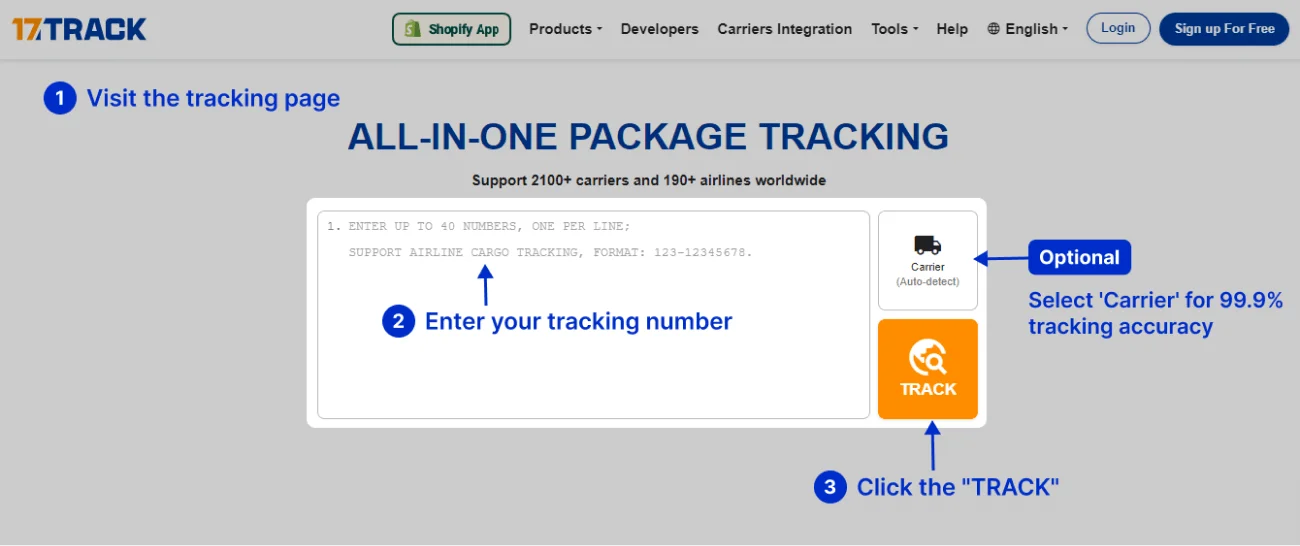
-
Break Bulk: This method involves shipping cargo that cannot fit into standard containers. Items are loaded individually.
- Pros: Flexibility in shipping oversized or oddly shaped items.
- Cons: Increased handling, higher risk of damage, and more complex logistics.
Conclusion
Selecting the right shipping method is critical for ensuring the efficient delivery of your goods from China. By understanding the strengths and weaknesses of each option, businesses can make informed decisions that align with their logistical needs, budget, and urgency. Whether opting for the economical route of sea freight or the speed of air freight, each method offers unique advantages that can be leveraged based on your specific shipping requirements.
Deconstructing the Cost: A Full Pricing Breakdown
Understanding the Costs Associated with China Post Small Packet Tracking
When shipping goods internationally, understanding the complete cost structure is vital for budgeting and financial planning. For businesses utilizing the China Post Small Packet service, costs can be categorized into three primary components: Main Freight, Origin Charges, and Destination Charges. Each of these components has unique factors that influence pricing.
Main Cost Components
Main Freight
Main freight refers to the core shipping cost associated with transporting goods from the origin country (China) to the destination country. For small packets, this cost will vary based on the shipping method selected, whether it be air, surface air lift (SAL), or surface transport.
- Air Freight: Generally the most expensive option, air freight is favored for its speed. Costs are influenced by the weight of the package, dimensions, and the distance to the destination.
- Surface Air Lift (SAL): A middle-ground option that combines speed and cost-efficiency, SAL is slower than air freight but faster than surface transport. Prices are determined by weight and volume.
- Surface Freight: The most economical option, suitable for non-urgent shipments. Pricing is influenced by package weight and size but can take much longer to reach the destination.
Origin Charges
These are costs incurred at the point of origin in China before the parcel is dispatched. Origin charges can include:
- Packaging Costs: Proper packaging is crucial to protect goods during transit. The choice of materials and their quality can affect costs.
- Handling Fees: Fees charged by postal services for processing parcels, which may vary based on the volume and type of goods.
- Customs Documentation: Depending on the nature of the goods, businesses may need to complete customs paperwork, which can incur additional fees.
Destination Charges
Upon arrival in the destination country, various charges may apply before the package is delivered. Key components include:
- Customs Duties and Taxes: Import duties and VAT can significantly impact the final cost. These charges vary widely by country and depend on the value and nature of the goods.
- Delivery Fees: Once customs clearance is completed, additional fees may be charged for local delivery, especially if the package is too large to fit in a mailbox.
- Storage Fees: If a package is not picked up promptly, it may incur storage fees at the local postal facility.
Detailed Cost Factor Analysis
Main Freight
The cost of main freight is determined by several factors:
– Weight: Heavier packages incur higher shipping fees.
– Dimensions: Packages exceeding standard dimensions may attract dimensional weight pricing.
– Shipping Method: Air freight is typically more expensive than SAL or surface transport due to its speed.
Origin Charges
Factors influencing origin charges include:
– Packaging Quality: High-quality packaging materials can increase costs.
– Volume of Shipments: Bulk shipments may qualify for discounts, reducing per-item costs.
– Local Regulations: Compliance with local shipping regulations may necessitate additional documentation and fees.
Destination Charges
Key influences on destination charges are:
– Local Customs Regulations: Different countries have varying tariffs and taxes, impacting the final price.
– Delivery Distance: Remote areas may attract higher delivery fees.
– Handling Requirements: Fragile or special items may incur additional handling fees at the destination.
Example Pricing Table
Below is a sample pricing table for shipping options from China to the USA, showcasing estimates for both sea and air freight. Please note that these figures are approximate and can vary based on specific circumstances.
| Shipping Method | 20ft Container | 40ft Container | LCL (per cubic meter) | Air Freight (per kg) |
|---|---|---|---|---|
| Cost Estimate | $1,200 – $2,500 | $2,500 – $4,500 | $100 – $150 | $5 – $10 |
Disclaimer: The prices listed above are estimates based on current market rates and are subject to change. Factors such as fuel surcharges, seasonal demand, and specific service providers may influence the final costs.
How to Reduce Costs
To effectively manage and reduce shipping expenses when using China Post Small Packet tracking, consider the following actionable tips:
-
Choose the Right Shipping Method: Evaluate the urgency of your shipments and select the most cost-effective shipping method accordingly. For non-urgent deliveries, consider using surface freight or SAL instead of air freight.
-
Optimize Package Size and Weight: Ensure that packages are properly sized to avoid dimensional weight pricing. Consolidate shipments when possible to reduce overall shipping costs.
-
Negotiate Bulk Rates: If your business regularly ships large volumes, negotiate bulk shipping rates with carriers to secure discounts.
-
Utilize a Freight Forwarder: Partner with a freight forwarder who can help navigate the complexities of international shipping and potentially lower costs through established relationships with carriers.
-
Stay Informed on Customs Regulations: Understanding the import duties and taxes for your destination country can help you avoid unexpected charges. This knowledge can assist in pricing strategies for your products.
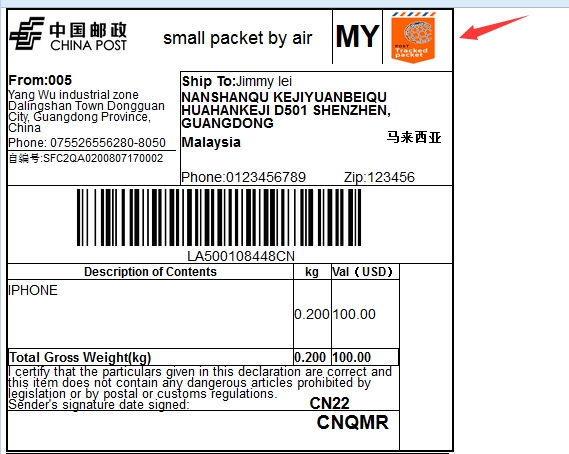
-
Leverage Technology: Use tracking software and logistics management tools to monitor shipments and optimize shipping routes, reducing delays and additional costs.
-
Review and Compare Services Regularly: Shipping rates can fluctuate, so regularly reviewing different carriers and their offerings can help you find the most cost-effective solution for your needs.
By understanding the cost components associated with China Post Small Packet tracking and implementing strategies to manage these expenses, businesses can enhance their logistics efficiency and maintain competitive pricing in the global market.
Transit Time Analysis: How Long Will It Take?
Understanding Transit Times for China Post Small Packet Tracking
When shipping goods internationally, particularly via China Post’s small packet services, understanding transit times is critical for effective logistics planning. Several factors can significantly influence the time it takes for packages to reach their destination. Below, we delve into these variables and provide a detailed estimated transit time table to aid in your shipping decisions.
Factors Influencing Transit Time
-
Shipping Mode: The choice between air freight and sea freight is one of the primary determinants of transit time. Air freight is generally faster, typically taking a few days to a couple of weeks, while sea freight can take several weeks to months, depending on the route and port operations.
-
Port Congestion: Congestion at departure or arrival ports can lead to significant delays. Busy ports may experience longer unloading times, resulting in a backlog that affects all incoming and outgoing shipments.
-
Customs Clearance: Packages must clear customs in both the exporting and importing countries. Delays can occur due to inspections, incomplete paperwork, or customs duties that need to be paid. This process can vary widely depending on the destination’s regulations and efficiency.
-
Shipping Routes: The chosen shipping route can influence transit times. Direct routes are faster, while indirect routes may add extra days due to layovers or transfers at additional ports.
-
Weather Conditions: Adverse weather can disrupt shipping schedules, particularly for air freight. Storms, heavy snow, or flooding can lead to flight cancellations or delays in port operations.
-
Public Holidays: National holidays in China or the destination country can affect processing times. During peak holiday seasons, shipping volumes increase, which may lead to additional delays.

Estimated Transit Time Table
Here’s a practical overview of estimated transit times for China Post small packet services between China and various destinations, utilizing both sea and air freight methods:
| Origin | Destination | Sea Freight (Days) | Air Freight (Days) |
|---|---|---|---|
| China | USA | 20-45 | 7-15 |
| China | UAE | 15-30 | 10-20 |
| China | Australia | 20-40 | 7-15 |
| China | Canada | 20-40 | 10-20 |
| China | UK | 20-35 | 7-15 |
| China | Germany | 20-40 | 7-15 |
| China | Brazil | 25-50 | 10-25 |
| China | South Africa | 30-60 | 15-30 |
Context and Explanation
The transit times provided in the table are estimates and represent the time from port to port. For example, the air freight time from China to the USA indicates how long it typically takes for a package to be shipped from a Chinese airport to an airport in the USA. It does not account for the time required for the package to reach the airport, customs processing, or final delivery to the recipient’s address.
When planning shipments, businesses should factor in potential delays due to the variables mentioned earlier. It is advisable to set realistic expectations with customers regarding delivery times and to monitor shipments actively. Utilizing tracking systems, such as those provided by China Post for small packets, can help keep shippers informed of their package’s status throughout its journey.
In summary, while China Post small packet services offer economical shipping options, understanding and anticipating transit times is essential for efficient logistics management. By considering the factors influencing these times and using the provided estimates, businesses can better plan their shipping strategies and enhance customer satisfaction.
Navigating Customs Clearance: A Step-by-Step Guide
The Process Explained
Navigating customs clearance can be a complex task, particularly when dealing with international shipments like those sent via China Post Small Packet. However, breaking it down into clear steps can simplify the process for international shippers, importers, and exporters. Here’s a typical workflow for customs clearance:
-
Preparation of Shipment: Before shipping, ensure that your package is correctly labeled and complies with the destination country’s regulations. Verify weight and dimensions to avoid additional fees.
-
Documentation Gathering: Collect all necessary documents that will accompany your shipment. This includes the commercial invoice, packing list, and any other required documentation based on the nature of the goods.
-
Submission to Customs: Once your package arrives at the destination country, it will be submitted to customs for inspection. Ensure that all documentation is accurate and complete to prevent delays.
-
Customs Inspection: Customs officials will inspect the package and its documents. They may open the package to verify contents against the provided documentation.
-
Payment of Duties and Taxes: If applicable, pay any duties and taxes calculated based on the contents and value of your shipment. This is usually done before the package is released.
-
Release of Shipment: Once customs clearance is complete and any fees are paid, the package will be released for final delivery. This may involve local postal services or courier companies.
-
Final Delivery: The package will be delivered to the recipient’s address or made available for pickup at a local post office, depending on the delivery service used.
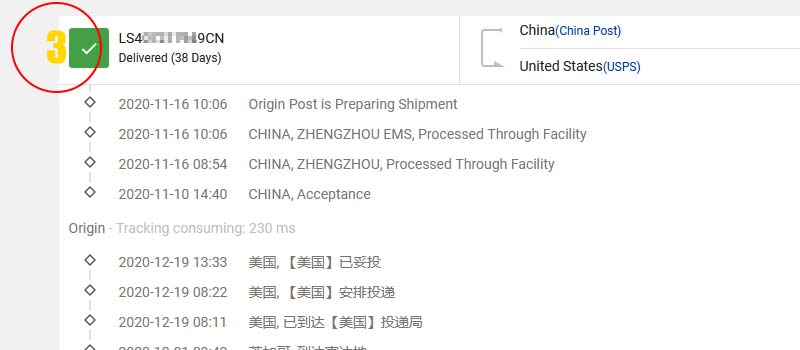
Essential Documentation
Proper documentation is vital to ensure a smooth customs clearance process. Here are the key documents required for shipments using China Post Small Packet:
-
Commercial Invoice: This document details the transaction between the seller and buyer, including descriptions of the goods, their value, and the terms of sale. It’s crucial for customs to determine the shipment’s value and applicable duties.
-
Packing List: This document outlines the contents of the shipment, including the quantity, description, and weight of each item. It aids customs in verifying the package contents during inspection.
-
Bill of Lading (BOL): If applicable, this document serves as a receipt for the shipment and outlines the terms of transport. It is often used in conjunction with other carriers but may not be needed for small packets sent via postal services.
-
Customs Declaration Form: This form is typically required by customs authorities to declare the contents of the shipment. It includes information about the sender, receiver, and the nature of the goods being shipped.
-
Certificate of Origin: In some cases, this document may be required to verify the origin of the goods, particularly for products that benefit from preferential tariff treatment.
Duties, Taxes, and HS Codes
Understanding duties, taxes, and HS codes is essential for international shipping. Here’s a breakdown of these concepts:
-
HS Codes: The Harmonized System (HS) Code is an internationally standardized numerical method of classifying traded products. Each code corresponds to a specific product type and is used by customs authorities to determine tariffs and collect trade statistics. It is essential to accurately classify goods using the correct HS code to avoid delays and penalties.
-
Duties and Taxes: Duties are tariffs imposed by governments on imported goods, while taxes may include value-added tax (VAT) or sales tax. The amount of duties and taxes owed is typically calculated based on the value of the goods, their classification (HS code), and the destination country’s regulations. It’s crucial to research and understand the specific duties and taxes applicable to your shipment to avoid unexpected costs.
Common Problems & Solutions
Navigating customs clearance can present challenges. Here are some common issues and how to avoid them:
- Incomplete Documentation: One of the most frequent causes of customs delays is missing or inaccurate documentation.
-
Solution: Double-check all required documents before shipping. Use a checklist to ensure you have everything needed for customs clearance.
-
Incorrect HS Code: Misclassifying goods can lead to incorrect duty assessments or shipment rejections.
-
Solution: Research the correct HS code for your products. If unsure, consult with a customs broker or use online resources to find the appropriate classification.
-
Undeclared Values: Under-declaring the value of goods can result in fines or confiscation.
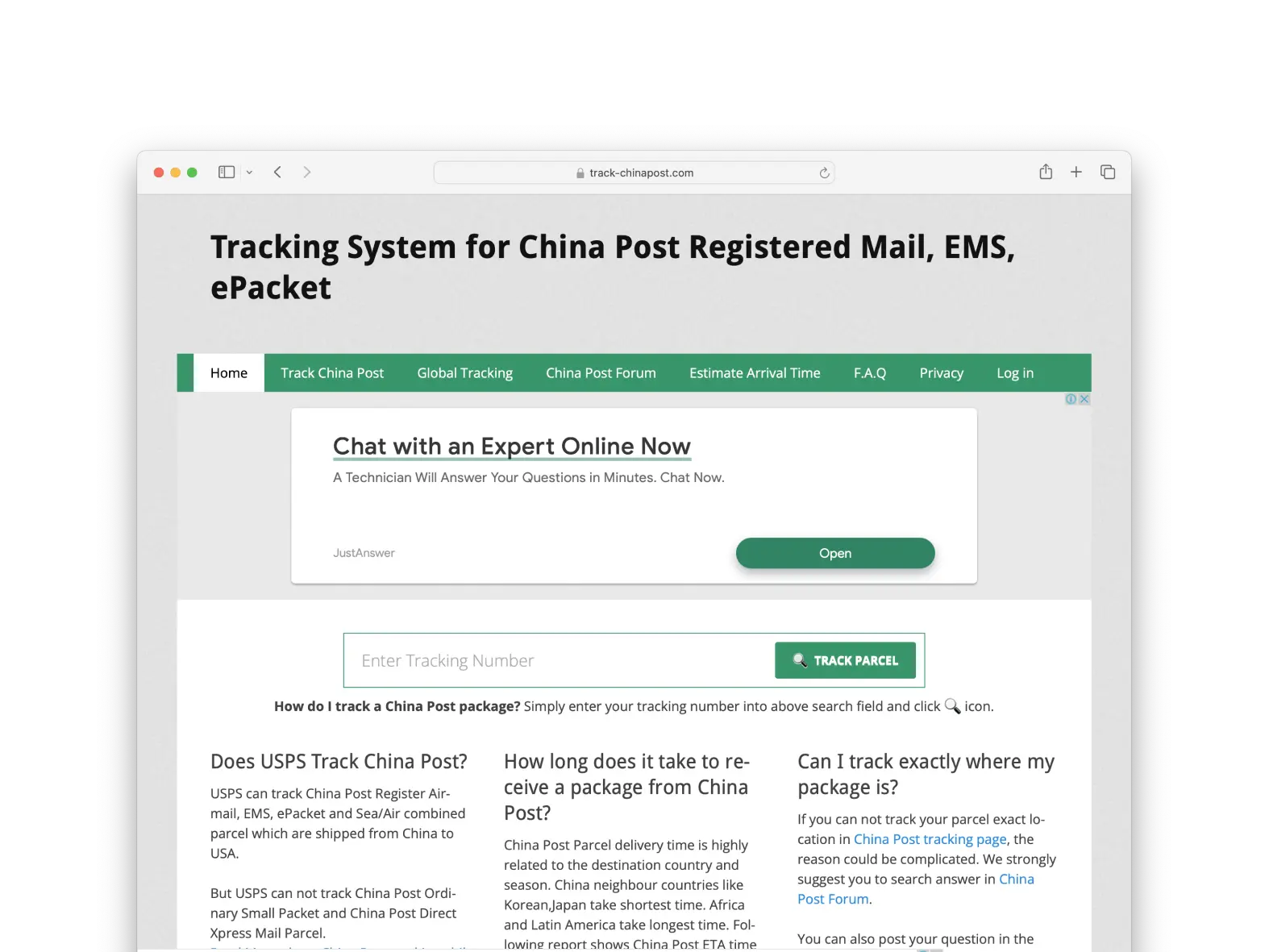
-
Solution: Always declare the accurate value of your goods based on the commercial invoice. Transparency is key in customs declarations.
-
Unpaid Duties and Taxes: If duties and taxes are not paid promptly, packages can be held in customs.
-
Solution: Be proactive in calculating potential duties and taxes before shipping. Prepare to pay these fees immediately upon customs notification.
-
Prohibited or Restricted Items: Shipping items that are not allowed or have specific restrictions can lead to delays or confiscation.
- Solution: Familiarize yourself with the destination country’s import regulations to ensure your shipment complies with their rules. Avoid shipping prohibited items.
By following these steps and understanding the customs clearance process, international shippers can navigate the complexities of shipping with China Post Small Packet more efficiently, minimizing delays and ensuring a smooth delivery experience.
A Practical Guide to Choosing Your Freight Forwarder
Understanding Your Freight Forwarding Needs
Choosing the right freight forwarder is crucial for businesses looking to ship small packages internationally, especially when utilizing services like China Post Small Packet tracking. A well-chosen freight forwarder can streamline your shipping process, save costs, and enhance customer satisfaction. This guide outlines the key qualities to look for in a freight forwarder, provides a practical sourcing checklist, and highlights potential red flags to watch out for.
Key Qualities of an Effective Freight Forwarder
When selecting a freight forwarder for your shipping needs, consider the following essential attributes:
-
Experience and Expertise
Look for a freight forwarder with a proven track record in international shipping, particularly with China Post services. Their experience can help navigate potential challenges related to customs regulations, documentation, and logistics. -
Strong Network
A reputable freight forwarder should have a robust global network, including partnerships with carriers and customs agents. This network can facilitate faster transit times and ensure reliable service to your desired destinations. -
Licensing and Compliance
Ensure that the forwarder is properly licensed and compliant with international shipping regulations. This includes having the necessary certifications and adhering to legal requirements in both the origin and destination countries. -
Transparent Communication
Effective communication is vital. Choose a freight forwarder that provides clear information about shipping processes, costs, and timelines. They should also offer timely updates regarding the status of your shipments.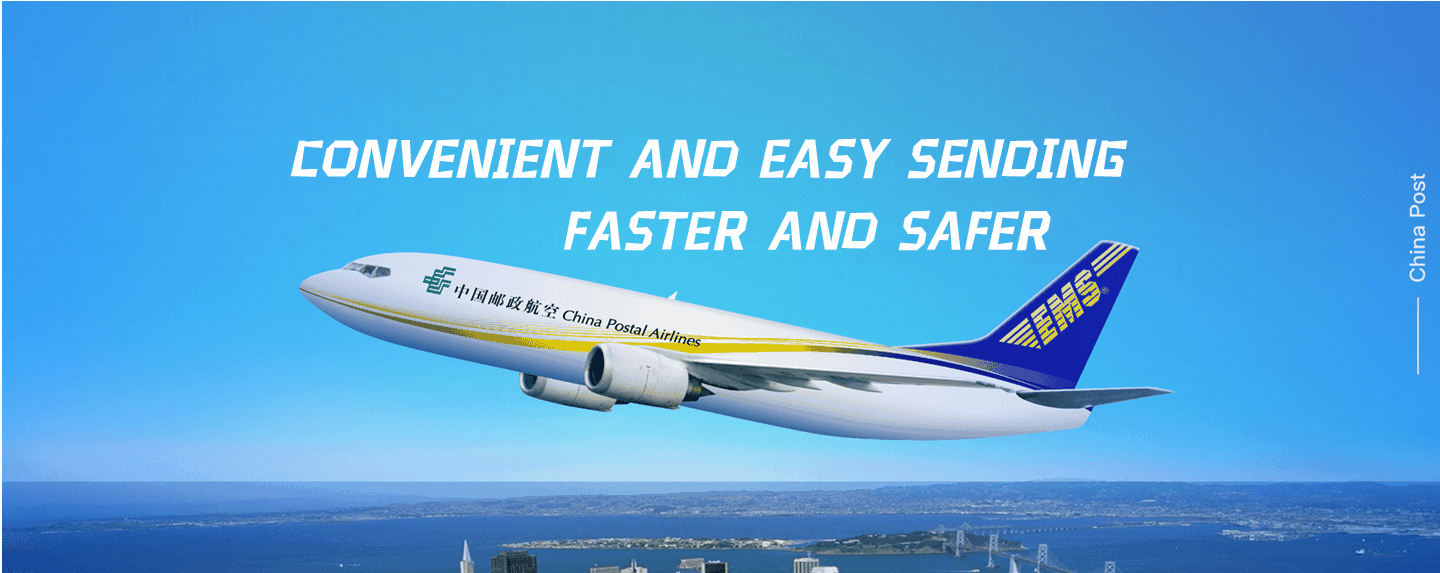
-
Technology and Tracking Capabilities
In today’s digital age, a good freight forwarder should utilize technology to provide real-time tracking of packages. This is particularly important for services like China Post Small Packet, where tracking can sometimes be limited.
Sourcing Checklist for Choosing a Freight Forwarder
To facilitate your selection process, follow this actionable checklist:
-
Define Your Shipping Needs
Assess your shipping volume, frequency, and specific requirements (e.g., types of goods, delivery timelines) to help narrow down your options. -
Research Potential Forwarders
Investigate potential freight forwarders that specialize in small packet shipping from China. Look for reviews, ratings, and testimonials from other businesses. -
Request Quotes
Reach out to shortlisted freight forwarders and request quotes. Make sure to provide them with detailed information about your shipping needs to receive accurate estimates. -
Ask Questions
Engage with potential forwarders by asking questions about their services, pricing structures, technology, and how they handle issues such as lost or delayed shipments.
-
Check References
Request references from current or past clients to gauge the forwarder’s reliability and quality of service. Speaking directly with other businesses can provide valuable insights.
Red Flags to Watch Out For
While evaluating freight forwarders, be vigilant for warning signs that may indicate potential issues:
-
Lack of Transparency
If a forwarder is unwilling to provide detailed information about their services, pricing, or tracking capabilities, it may indicate a lack of professionalism. -
Unclear Licensing
A forwarder should readily provide proof of their licensing and compliance with regulations. Avoid those who hesitate to share this information. -
Limited Experience with China Post
Be cautious of freight forwarders that do not have a solid understanding or experience with China Post services, as this may lead to complications in your shipping process. -
Negative Reviews
Pay attention to negative feedback or patterns in reviews regarding service reliability, communication, or hidden fees. Consistent complaints can be a red flag. -
High Upfront Fees
While some fees are standard in the industry, excessive upfront charges or unclear pricing structures can indicate potential issues down the line.
Conclusion
Choosing the right freight forwarder for your small packet shipping needs is a critical decision that can impact your business’s efficiency and customer satisfaction. By focusing on key qualities, following a structured sourcing checklist, and remaining vigilant for red flags, you can make an informed choice that aligns with your shipping requirements. Ultimately, a reliable freight forwarder will not only facilitate smooth shipping operations but also contribute to your business’s growth and success in the global market.
Incoterms 2020 Explained for Shippers
Understanding Incoterms 2020
Incoterms, or International Commercial Terms, are standardized trade terms published by the International Chamber of Commerce (ICC) that define the responsibilities of buyers and sellers in international transactions. They clarify who is responsible for various costs and risks associated with the transportation of goods, including shipping, insurance, and customs duties. Understanding these terms is crucial for shippers utilizing services like China Post Small Packet, as they determine the logistics and financial responsibilities throughout the shipping process.
Key Incoterms Table
| Incoterm | Who Pays for Transport? | Where Risk Transfers? | Best for |
|---|---|---|---|
| EXW | Buyer | At the seller’s premises | Buyers with strong logistics |
| FOB | Seller | Once goods are loaded on vessel | Sellers managing ocean freight |
| CIF | Seller | At destination port | Buyers seeking cost certainty |
| DDP | Seller | At the buyer’s premises | Buyers who prefer all-inclusive |
EXW (Ex Works)
Under the EXW Incoterm, the seller’s responsibility is minimal, as they are only required to make the goods available at their premises or another named place. The buyer assumes all costs and risks from that point onward. For instance, if a business in Australia orders small electronic components from a supplier in China using China Post Small Packet, they would need to arrange for transport from the supplier’s factory, handle customs clearance, and manage any shipping fees. This Incoterm is best suited for buyers who have established logistics networks and can efficiently handle the entire shipping process.
FOB (Free On Board)
FOB places more responsibility on the seller, who must cover all costs associated with transporting the goods to the port of shipment and loading them onto the vessel. The risk transfers to the buyer once the goods are on board the ship. For example, a UAE-based importer purchasing textiles from China would use FOB to ensure that the Chinese seller handles the shipping to the port and loads the goods onto the vessel. After loading, the UAE importer assumes responsibility for the shipment, including any costs incurred during transit. This Incoterm is particularly beneficial for sellers who are experienced with maritime logistics.
CIF (Cost, Insurance, and Freight)
CIF is advantageous for buyers who prefer some degree of cost certainty. The seller is responsible for all costs, including transport, insurance, and freight, up to the destination port. Once the goods arrive at the port, the risk transfers to the buyer. For instance, if an Australian retailer orders products from a Chinese manufacturer via China Post Small Packet and opts for CIF, they can rest assured that the seller will cover shipping and insurance until the goods reach the Australian port. This arrangement allows buyers to focus on their core business without worrying about shipping logistics.
DDP (Delivered Duty Paid)
Under DDP, the seller assumes maximum responsibility, covering all costs and risks associated with transporting the goods to the buyer’s location, including duties and taxes. This term is ideal for buyers who prefer a hassle-free experience. For example, a business in the USA purchasing small gadgets from China using DDP would have the seller manage everything from shipping to customs clearance and delivery to their doorstep. This Incoterm is perfect for businesses that want to simplify the shipping process, as it allows them to avoid navigating the complexities of international trade logistics.
Conclusion
Choosing the right Incoterm is essential for international shippers, especially those using services like China Post Small Packet. Each term carries specific responsibilities and risks that can significantly impact shipping efficiency and costs. By understanding these terms, businesses can make informed decisions that align with their logistics capabilities and shipping needs, ultimately enhancing their international trade operations.
Risk Management: Identifying and Mitigating Common Shipping Problems
Introduction
In the realm of international shipping, particularly with services like China Post Small Packet, proactive risk management is crucial for businesses aiming to maintain operational efficiency and customer satisfaction. The logistics landscape is fraught with potential challenges, including delays, cargo damage, and customs issues, all of which can impact delivery timelines and financial outcomes. By identifying these risks and implementing effective mitigation strategies, businesses can enhance their supply chain resilience, minimize disruptions, and foster trust among customers.
Risk Analysis Table
| Potential Risk | Impact | Mitigation Strategy |
|---|---|---|
| Cargo Damage | Can lead to financial losses and customer dissatisfaction. | Use robust packaging materials and clearly label fragile items. Consider cargo insurance for high-value items. |
| Delays | Extended delivery times can affect inventory management and customer satisfaction. | Monitor shipping status regularly using tracking tools. Communicate expected delays to customers promptly. |
| Customs Holds | Packages can be detained, causing unforeseen delays and potential fines. | Ensure all customs documentation is accurate and complete. Stay informed about import regulations in the destination country. |
| Lost Packages | Resulting in financial losses and customer complaints. | Utilize registered shipping options for valuable items. Keep detailed records of tracking information and communicate with customers. |
| Regulatory Changes | Changes in trade policies can lead to unexpected shipping issues. | Stay updated on international trade regulations and adapt shipping practices accordingly. Engage with customs brokers for expert advice. |
| Return and Refund Issues | Managing returns can be complex and costly. | Establish clear return policies and communicate them to customers. Use reliable tracking to handle returns efficiently. |
Cargo Insurance Explained
Cargo insurance is a critical component of risk management in shipping, providing financial protection against loss, damage, or theft of goods while in transit. Understanding the types of cargo insurance and their benefits can help businesses safeguard their investments and maintain operational continuity.
What It Covers
Cargo insurance typically covers the following:
- Physical Damage: Protection against damage due to accidents, weather conditions, or mishandling during transit.
- Theft or Loss: Coverage for goods that are lost or stolen while in transit.
- Liability for Third-Party Claims: Protection against claims for damages caused by your cargo to third parties during transport.
Types of Cargo Insurance
- All-Risk Coverage: Offers broad protection against most risks, including theft and damage, with few exclusions.
- Named Perils Coverage: Covers specific risks outlined in the policy, such as fire, theft, or collision.
- Total Loss Coverage: Provides compensation if the entire shipment is lost, usually due to shipwreck or other significant incidents.
Why It’s Essential
Investing in cargo insurance is essential for several reasons:
- Financial Security: It protects your business from significant financial losses resulting from unforeseen events.
- Customer Trust: Offering insured shipping options can enhance customer confidence in your services.
- Peace of Mind: Knowing that your cargo is insured allows you to focus on other aspects of your business without worrying about potential losses.
Conclusion
Navigating the complexities of international shipping with China Post Small Packet requires a strategic approach to risk management. By identifying potential risks, implementing robust mitigation strategies, and considering cargo insurance, businesses can enhance their resilience against common shipping problems. This proactive stance not only protects financial interests but also fosters stronger relationships with customers, ultimately driving long-term success in the global marketplace.
Frequently Asked Questions (FAQs) for China Post small packet tracking
1. What is China Post Small Packet tracking?
China Post Small Packet tracking refers to the ability to monitor the status and location of parcels sent via the China Post Small Packet service. This economical shipping option is designed for lightweight items and provides a unique tracking number that allows shippers and recipients to follow their parcels from dispatch in China to delivery in the destination country.
2. How can I track my China Post Small Packet?
To track your China Post Small Packet, enter the tracking number into a tracking website or application. The tracking number typically consists of 13 characters, starting with an “R” for registered parcels or “U” for unregistered ones. For example, a registered parcel may have a format like “RS123456789CN.”
3. What is the typical delivery time for China Post Small Packet?
Delivery times for China Post Small Packet can vary significantly based on the destination. Generally, parcels take between 20 to 60 days to reach their final destination. Some shipments may take longer, especially during peak seasons or due to customs clearance delays.
4. What should I do if my package is delayed or lost?
If your package is delayed or not received within the expected timeframe, first check the tracking information for updates. If the package appears lost, contact the seller to initiate a dispute for a refund, especially if the item was sent via a registered service. Unregistered parcels typically do not offer compensation for loss.
5. Are there any size and weight restrictions for China Post Small Packet?
Yes, China Post Small Packet services have specific size and weight restrictions. The maximum weight for small packets is 2 kg (approximately 4.4 lbs), and the combined dimensions (length + width + height) must not exceed 90 cm (about 35 inches), with no single dimension exceeding 60 cm (about 24 inches).
6. What is the difference between registered and unregistered China Post Small Packet?
Registered China Post Small Packet provides a tracking service and compensation for loss, making it more secure but slightly more expensive. Unregistered packets, on the other hand, are cheaper but do not come with tracking or compensation for loss, and tracking is only available while the package is still in China.
7. Can I get compensation for lost or damaged parcels?
For registered parcels, you can claim compensation if the package is confirmed lost or damaged. China Post typically evaluates the value of the goods and compensates you, often up to two or three times the shipping charge. However, unregistered parcels do not qualify for any compensation.
8. How does customs clearance affect my shipment?
Customs clearance can significantly impact delivery times for international shipments. Packages may be held for inspection, which can lead to delays. To minimize issues, ensure that all required documentation is complete and accurate, and that the goods comply with the destination country’s import regulations.
9. What is chargeable weight, and how does it affect shipping costs?
Chargeable weight is the greater of the actual weight or the volumetric weight of a package, calculated based on its dimensions. This metric is used by shipping carriers to determine shipping costs. For China Post Small Packet, ensuring that your package is within the weight limits is crucial for economical shipping.
10. What are the differences between Bill of Lading (BOL) and Air Waybill (AWB) in freight forwarding?
A Bill of Lading (BOL) is a document that serves as a receipt for goods and a contract for transportation by sea, while an Air Waybill (AWB) is a similar document for air freight. Both documents provide essential information about the shipment, but the key difference lies in the mode of transport they are associated with. Understanding these documents is important for logistics and customs processes.
Conclusion: Key Takeaways for Successful Shipping
Understanding the Essentials for Successful Shipping
As international shippers, importers, and exporters navigate the complexities of global logistics, particularly when utilizing services like China Post Small Packet, several critical takeaways emerge that can significantly enhance shipping efficiency and reliability.
Effective Planning is Key
Strategic planning is paramount in international shipping. Understanding the nature of your products, their dimensions, and weight is essential to selecting the appropriate shipping method. With China Post Small Packet, for instance, packages must weigh under 2 kg and meet size restrictions. Careful planning helps avoid unexpected costs and delays, ensuring smooth transitions from origin to destination.
Choosing the Right Partners
Selecting the right logistics partners is crucial. China Post offers a reliable and cost-effective solution for small parcels, especially for e-commerce businesses. However, it’s essential to evaluate additional services and technologies that can streamline tracking and customer communication. Utilizing tracking apps can greatly enhance transparency, allowing both shippers and recipients to monitor package status effectively, thereby improving customer satisfaction.
Cost Management
Understanding the cost implications of various shipping options can lead to significant savings. While China Post Small Packet is an economical choice, shippers should weigh the benefits of registered versus unregistered services. Registered mail offers tracking and compensation options, which can mitigate losses and enhance accountability. Additionally, being aware of potential customs duties and fees in destination countries is crucial for accurate budgeting.
Take Action Today
With these key takeaways in mind, businesses can optimize their shipping strategies to ensure timely and cost-effective deliveries. Embrace the advantages of using China Post Small Packet, leverage technology for tracking, and partner with reliable logistics providers. As you embark on your shipping journey, remember that informed decisions lead to successful outcomes. Start refining your shipping processes today and watch your global business thrive!
Important Disclaimer
⚠️ Important Disclaimer
The information in this guide is for educational purposes only and does not constitute professional logistics advice. Rates, times, and regulations change frequently. Always consult with a qualified freight forwarder for your specific needs.

